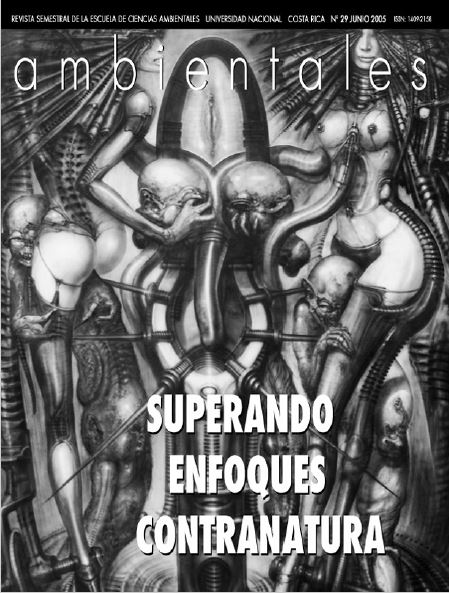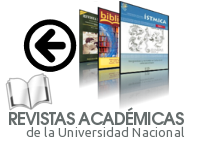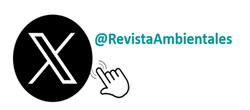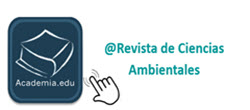The Community that Eats the Canopy of the Premontane Wet Forest
DOI:
https://doi.org/10.15359/rca.29-1.1Keywords:
Bosque húmedo premontanoAbstract
Alter establishing that the ‘güetar’ indigen culture, settled in the Central Valley of Costa Rica, was –besides being displaced and dislocated-used by the Spanish conquerors for the domain of other peripheral peoples over which the ‘güetars’ had control, two areas of ‘güetar’ settlement survivors of extermination, Zapatón and Quitirrisí, are ecogeographically and ethnographically described. It’s argued that this culture always knew that the nutrient wealth is not in the ground but in the forest canopy, that’s why their farming was focalized in it through genetic manipulation, domestication of certain species and the development of vegetative farming practices like itinerant farming of field burning and grave, of ploughing and systems of policulture, in which the high protein and mineral content of canopy vegetation is used as it falls to the ground and decomposes after field burning. Finally, 66 botanical species used by the ‘güetars’ are accounted.
References
Bozzolli, María Eugenia. 1975. Localidades indígenas costarricenses. Educa. San José.
Cascante, Alfredo y Armando Estrada. “Composición florística y estruc-tura de un bosque húmedo premontano en el Valle Central de Costa Rica”, en Revista de Biología Tropical. Vol. 49, 1, 2001. San José.
Paniagua, José M. 2003. Tenencia de tierras y áreas de bosque en las reservas indígenas de Costa Rica, 2003. Comisión Nacional de Asuntos Indígenas. San José.
García, Marlen. 2005. Reserva Indígena de Quitirrisí. Área de Salud de Mora Palmichal. Costa Rica.
Hinkelammert, Franz. 2000. Sacrificios humanos y sociedad occidental. Dei. San José.
Ministerio de Salud. 2004. Análisis situacional de salud del Área de Salud Mora Palmichal. Ministerio de Salud. Costa Rica.
Pérez, Marta. 2005. Comunicación personal.
Poveda, Luis y Jorge León. 2000. Nombres comunes de las plantas en Costa Rica. Editorial Guayacán. San José.
Quesada, Miguel Ángel. 1996. Comunicación personal.
Quesada, Miguel Ángel. 1997. Abecedario ilustrado de la lengua hue-tar. Euna. Costa Rica.
Quesada, Miguel Ángel. 1998. Los huetares: historia, lengua, etno-grafía y tradición oral. Editorial Tecnológica de Costa Rica. San José.
Vargas, Luis et al. “Estructura y funcionamiento de los ecosistemas de bosque tropical”, en Revista de la Escuela de Geografía de la Universidad de Costa Rica, 7, 1992.
Pérez, Miguel. 2005. Comunicación personal.
Restrepo, Jairo. 1998. De la agricultura del suelo a la agricultura del sol. Fundación Güilombé. San José.
Rodríguez, Juan de Dios. 1996. Comunidad huetar: cuentos y leyendas quitirriseñas. Efuna. Costa Rica.
Sánchez, Juan. 2005. Comunicación personal.
Toledo, Víctor. 1991. Manual de investigaciones etnoecológicas en América Latina: la estrategia campesina del uso múltiple de los recursos naturales. Universidad Autónoma de México. México.
Tosi, Joseph. 1969. Mapa ecológico según la clasificación de zonas de vida del mundo de L. R. Holdridge. Instituto Geográfico Nacional. San José.
Downloads
Published
How to Cite
Issue
Section
License

This work is licensed under a Creative Commons Attribution-NonCommercial-ShareAlike 4.0 International License.



















